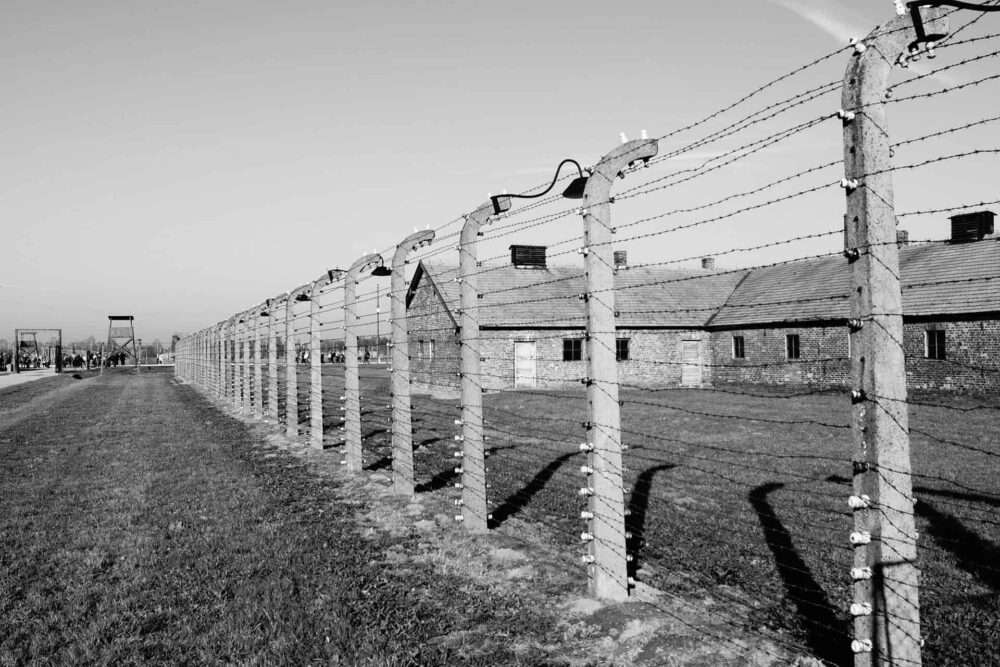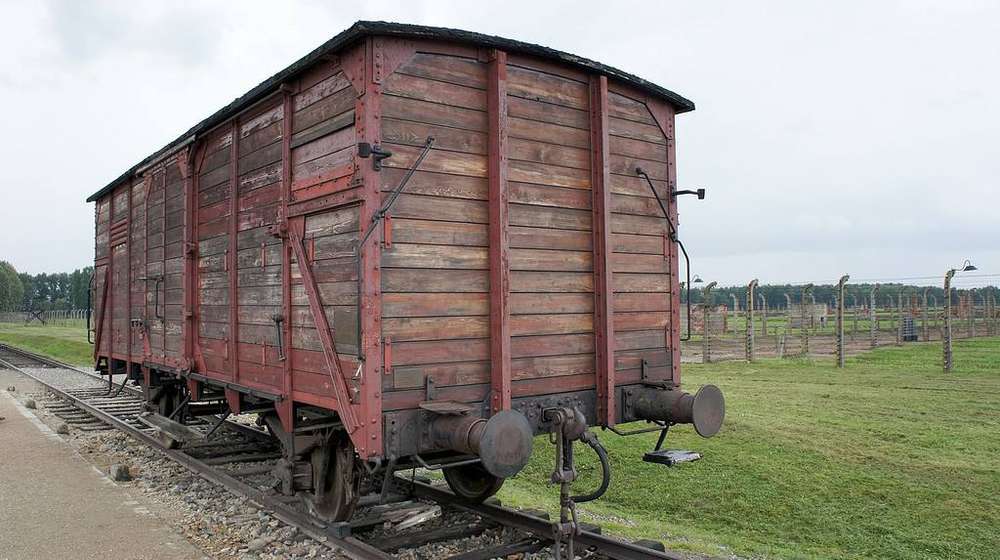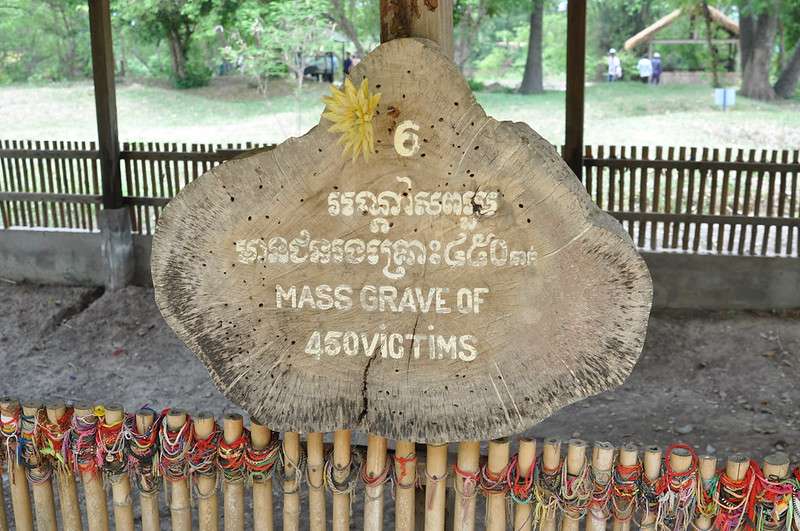- Home
- Blog
- Write for Us
- Travel Shop
- Type of TripsSolo Female TravelGirls Trip DestinationsAdventureBudget TravelLuxury TravelSolo Female TravelGirls Trip DestinationsAdventureBudget TravelLuxury Travel
- Resources

Genocide is one of the most heinous crimes known to humanity. In this article, we are going to explore the genocide camps around the world. The sites of these atrocities are often chilling reminders of the dark side of humanity. If you’re interested in learning about genocide and the horrific acts that have taken place throughout history, consider visiting some of these infamous genocide camps around the world.
Yes, it’s a unique form of tourism called Dark Tourism, but it allows us to learn about all aspects of history, not just the happy-go-lucky parts. Each tells its own story of heartache and loss and offers a unique perspective on genocide. So, if you’re looking for a travel experience that is based on reality and offers perspective and an opening of your mind, read on.
Table of Contents
If you’re interested in learning about genocide, Auschwitz should be at the top of your list. It was the largest of the Nazi concentration camps, with over a million inmates. Birkenau, one of its sub-camps, was the largest, with over 200,000 inmates at its peak.
What makes Auschwitz so important is that it was the first camp to be liberated by the Allies, and it was one of the first to be opened as a museum. The camp itself is massive and impressive, but by knowing what happened and feeling of the camp and its surroundings, you’ll be able to form your own impressions of such a dark history.
When it comes to genocide, most people think of Auschwitz or the Holocaust. But what about the genocide camps of Rwanda? Kigali was the site of the Rwandan genocide, during which an estimated 800,000 people were killed. A visit to the Kigali Genocide Memorial Centre is a deeply disturbing experience, as the city itself is beautiful, with lush green hills and lovely colonial-era buildings.
I am always amazed at how something so horrible can occur in areas of such beauty. Providing your respects to those who experienced a life of pain and torture can provide you with a gratitude you weren’t aware you had in you, especially in genocide camps around the world.

Srebrenica is a memorial to the 8,000 Muslim men and boys killed during the Bosnian War. It’s considered to be one of the worst massacres in Europe since World War II. Today, Srebrenica is a memorial to those who were killed, with a cemetery holding the graves of more than 6,000 victims and a museum that tells the story of what happened.
So many of the war-torn areas are skimmed over, but to really be able to see the area and ponder life, learn of a history that isn’t popular, can provide you with an entirely new perspective.
Check out: 9 Reasons to Visit Mongolia: A Once-in-A-Lifetime Destination

The Khmer Rouge regime was responsible for the deaths of millions of people in the late 1970s. The S-21 prison was one of the most notorious extermination camps of the Khmer Rouge, with at least 14,000 people killed. Visiting these camps is a sobering experience, but it is important to remember these atrocities. Can you imagine a world where we didn’t think about the violence and hate that came before us? The probability it would happen over and over again would grow exponentially.
So, picture this: Cambodia, where the Pol Pot genocide camps were like the real-life versions of your worst nightmares. The Khmer Rouge ran the show, enforcing their twisted vision with all the warmth and fuzziness of a hungry crocodile. From Tuol Sleng (aka Security Prison 21) in Phnom Penh to the bone-chilling Killing Fields of Choeung Ek, these places were like horror movie sets with a side order of unspeakable horrors. Yeah, it’s as heavy as it sounds.
Now, hold onto your hats, ’cause we’re diving deeper into the belly of the beast. Within these camps, it was like a well-oiled machine of terror. Prisoners faced forced labor, starvation, torture, and execution. Tuol Sleng’s walls probably echoed with more screams than a Justin Bieber concert, and the Killing Fields? Let’s just say they were like a silent, haunting graveyard for countless lives lost. It’s the stuff of spine-tingling nightmares, my fearless friends.
Fast forward to today, and these places have transformed into somber memorials to the victims of the genocide. Visitors from around the world make the pilgrimage to Cambodia, preparing to face the raw truths within these walls. Tuol Sleng and the Killing Fields are open for business, offering guided tours and educational exhibits that shine a big, bright spotlight on this seriously dark chapter of history. Prepare yourself, dear readers—it’s about to get real heavy.
Alright, for visitors, stepping into these sites is like entering a haunted house but without the fake scares and rubber spiders. Walking through Tuol Sleng’s corridors and peeping into those prison cells, you can practically feel the weight of history bearing down on you like a giant, history-shaped boulder. And the Killing Fields? It’s like standing in a sea of quiet serenity that forces you to confront the fragility of human life.
The Ottoman Empire ruled over Southeast Europe, North Africa, and parts of the Middle East for centuries. As you might expect, the Ottoman Empire was responsible for some of the worst genocide camps in history. Learning how religion has impacted our history is vital to finding ways to prevent atrocities in the future. We have to become more accepting of our fellow man, or our population will continue to exterminate itself.
Historical Context: So, picture this. The Ottoman Empire, at the peak of its power, had a front-row seat to witness the systematic extermination of its Armenian, Assyrian, and Greek populations. You know, just a casual genocide during the late 19th and early 20th centuries. The Young Turk government, driven by nationalist fervor and a dash of ethnic tensions, thought it would be fun to orchestrate a little campaign of terror. The result? The deaths of millions. How charming, right?
Scope and Methods: Now, let’s talk about the genocide itself. Brace yourselves. It involved mass deportations, forced marches, and the occasional massacre, all in the name of eradicating entire communities that were oh-so-disloyal to the empire. Because, you know, the solution to a disagreement is obviously systemic torture, starvation, and systematic killings. Ugh, how can people be so messed up?
Visitor Access: Fast forward to today, and we’ve got remnants of the Ottoman Empire genocide serving as lovely little sites of remembrance and reflection. Places like Armenia and Turkey have hopped on the memorial train, hosting memorials, museums, and historical sites that bear witness to the atrocities committed during this dark chapter of history.
Engaging with the Legacy: For visitors, engaging with the legacy of this genocide is like entering a swirling vortex of emotions. Walking through the halls of the Armenian Genocide Museum in Yerevan or visiting the Memorial to the Armenian Genocide in Istanbul, you can practically feel the weight of mass violence on individual lives and collective memory.
Education and Advocacy: But hey, these sites are more than just your average tourist traps! They’re crucial tools for education and advocacy. By witnessing the wreckage of the past, visitors gain a deeper understanding of the consequences of hatred and intolerance. It’s like a lesson in humanity, wrapped up in a neat little package of grim history. And, it fosters dialogue and reconciliation between communities torn apart by this dark past. Maybe, just maybe, we can prevent future atrocities by learning from the mistakes of the past?
Challenges and Controversies: Of course, nothing in this world is without challenges and controversies. When it comes to visitor access to these sites, things can get messy. We’re talking political tensions, denialism, and the ever-popular historical revisionism.
I can’t say enough about taking the time to take in and pay your respects to one of the many Dark Tourist sites that were known for genocide. While it’s not a popular or a “fun” thing to do, it does open your eyes to an entirely new world; and isn’t that what travel is all about? You learn the good and the bad, and you form your own opinions.
You learn how to think for yourself and develop an understanding of humankind. If you choose to go through life oblivious, then certainly, choose a beach and a bucket of beers, but if you choose to experience the world and cultures, you should take in the good and the bad. You’ll be amazed by how much you grow in just one visit. But no matter where you decide to travel to, dark tourist sites or not, always remember to Travel Till You Drop!


Hi, Jill Here
Hi! I’m Jill, a Dallas, Texas girl traveling the world. After a career in the Air Force and touring over 50 countries later, my need to explore keeps going! It’s time to rock & roll and find all those places I never knew I was missing.
Table of Contents
Join me to get exclusive travel tips, giveaways and more!
Gallery
Copyright © 2023 | All Right Reserved